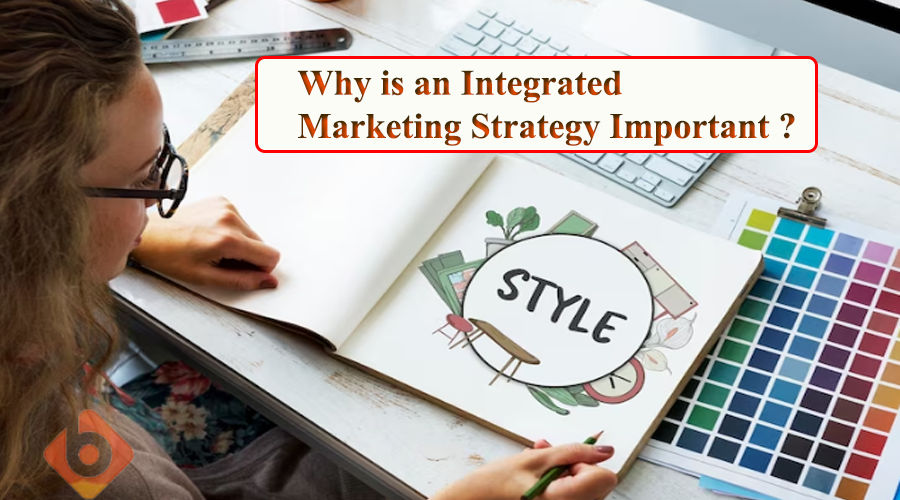Enter the power of an integrated marketing strategy-a dynamic and holistic approach that unifies all facets of marketing to propel your brand to the forefront.
An integrated marketing strategy is a carefully crafted plan that seamlessly blends different marketing elements, including advertising, public relations, social media, content marketing, search engine optimization (SEO), email marketing, and more. It's an orchestration of efforts aimed at creating a cohesive brand experience across multiple touchpoints, ensuring consistent messaging and reinforcing your brand's core values.
What is an Integrated Marketing Strategy?
An integrated marketing strategy is a holistic approach to marketing that ensures that all your marketing efforts are consistent with your brand identity, values, and goals. It involves integrating all your marketing communications tools, such as advertising, public relations, sales promotion, direct marketing, social media, content marketing, email marketing, etc., to create a unified and seamless customer experience across multiple touchpoints. An integrated marketing strategy also involves aligning your marketing mix elements, such as product, price, place, and promotion, to match the needs and preferences of your target market segments.

An integrated marketing strategy is based on the following principles:
- Customer-centricity: You put the customer at the center of your marketing decisions and activities, and focus on delivering value and satisfaction to them.
- Segmentation: You divide your market into distinct groups of customers who have similar needs, wants, characteristics, or behaviors, and tailor your marketing efforts accordingly.
- Targeting: You select the most attractive and profitable segments to focus on, and allocate your resources accordingly.
- Positioning: You create a distinctive image and perception of your brand in the minds of your target customers, relative to your competitors.
- Differentiation: You offer something unique or superior to your customers that sets you apart from your competitors.
- Branding: You create a name, logo, slogan, design, or other elements that identify and represent your brand, and convey its personality, values, and promise.
- Messaging: You craft clear, compelling, and consistent messages that communicate the benefits and value proposition of your brand to your target customers.
- Channel selection: You choose the most appropriate and effective channels to deliver your messages to your target customers, based on their preferences, behaviors, and media habits.
- Channel integration: You coordinate and synchronize all your channels to create a seamless and consistent customer experience across all touchpoints.
- Evaluation: You measure and monitor the performance and effectiveness of your integrated marketing strategy using various metrics and indicators.
Why is an Integrated Marketing Strategy Important?
An integrated marketing strategy is important because it can help you beat the competition in several ways:
- It can help you create a unique and memorable brand identity that distinguishes you from your competitors and attracts more customers.
- It can help you enhance customer loyalty and satisfaction by delivering a consistent and coherent message that reinforces their trust and confidence in your brand.
- It can help you increase your market share and profitability by reaching more customers with more relevant and persuasive messages that influence their purchase decisions.
- It can help you improve your competitive advantage by leveraging your strengths and opportunities, and addressing your weaknesses and threats.

How to Develop an Integrated Marketing Strategy?
To develop an integrated marketing strategy, you need to follow these steps:
- Conduct a situational analysis: You need to analyze the internal and external factors that affect your business and marketing situation. This includes conducting a SWOT analysis (strengths, weaknesses, opportunities, threats), a competitor analysis (identifying who are your main competitors, what are their strengths and weaknesses, how do they position themselves in the market), a customer analysis (identifying who are your target customers, what are their needs, wants, preferences, behaviors), and a market analysis (identifying the size, growth, trends, and opportunities of your market).
- Define your marketing objectives: You need to set specific, measurable, achievable, realistic, and time-bound (SMART) goals that you want to achieve with your marketing strategy, such as increasing sales, market share, brand awareness, customer satisfaction, etc.
- Develop your marketing strategy: You need to decide how you will segment, target, position, and differentiate yourself in the market. You also need to develop your branding strategy (how you will name, design, and communicate your brand) ,and your messaging strategy (how you will craft and deliver your value proposition and benefits to your target customers).
- Choose your marketing mix: You need to select the most appropriate and effective combination of product, price, place, and promotion elements to support your marketing strategy. You need to consider the features, quality, design, packaging, etc. of your product; the pricing strategy, discounts, incentives, etc. of your price; the distribution channels, locations, inventory, etc. of your place; and the advertising, public relations, sales promotion, direct marketing, social media, content marketing, email marketing, etc. of your promotion.
- Integrate your marketing communications: You need to coordinate and align all your marketing communications tools and channels to create a unified and seamless customer experience across multiple touchpoints. You need to ensure that your messages are clear, consistent, and coherent across all channels, and that they reinforce each other and support your brand identity and value proposition.
- Implement and evaluate your marketing strategy: You need to execute your marketing plan and monitor its performance and effectiveness using various metrics and indicators, such as sales volume, market share, brand awareness, customer satisfaction, return on investment, etc. You also need to collect feedback from your customers and stakeholders, and make adjustments and improvements as needed.
Conclusion
An integrated marketing strategy is a powerful way to beat the competition in today’s competitive and dynamic business environment. It can help you create a unique and memorable brand identity, enhance customer loyalty and satisfaction, increase your market share and profitability, and improve your competitive advantage. To develop an integrated marketing strategy, you need to conduct a situational analysis, define your marketing objectives, develop your marketing strategy, choose your marketing mix, integrate your marketing communications, and implement and evaluate your marketing strategy. By following these steps, you can create a holistic and consistent marketing plan that can help you achieve your business goals and outperform your competitors.
Related titles:
05 Effective Marketing Strategies to Increase Business Sales
